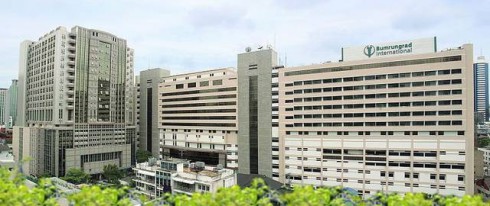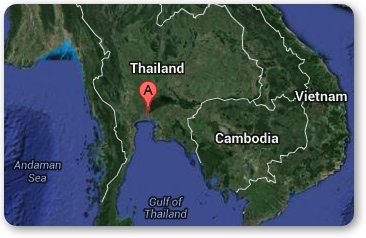What can we learn from overseas health care
Posted By RichC on December 11, 2013

The other day in sorting through my email inbox (need to work on a few more filters), I ran across a personal story about medical care overseas … in this case Bangkok, Thailand. For some of us, including the author, there is a preconceive notion that going into a hospital in southeast Asia is dangerous and will not be on par with U.S. hospitals. The results were surprising and in fact eyeopening enough that our bureaucrats, insurance execs, hospital administrators and doctors should visit and take notes. Maybe they could learn something about offering excellent care and reducing cost for our citizens (see procedure comparisons below)? I may plan a vacation to Thailand the next time a medical need arises, especially IF Obamacare continues to implode our already expensive health care system.
As for the story, I’ll shorten, de-personalize and include a few of the important points below.
I was rushed to the hospital… I was having trouble breathing. The problem came out of nowhere. And it was getting worse. I had no idea what a hospital in Bangkok would be like… but I was about to find out. I’m sure the average American thinks a hospital in Bangkok would be an incredibly risky place to go… But when I was having trouble breathing, what were my alternatives? The mental picture most Americans probably have of a Bangkok hospital is an old, overcrowded, extremely unsanitary place… In short, a place where you could easily die from some sort of mistake or poor care. The reality is completely different…
Consider the case of the Bumrungrad International Hospital in Bangkok. It’s more like a five-star hotel with world-class medical facilities… [a friend] who lives in Hong Kong – says that many of his friends travel to Bumrungrad for their yearly checkups and medical procedures. They make a vacation out of it… “Go to Thailand for a few days, get the medical stuff out of the way, and hit the beach. Adding it all up, including the flights and everything, the price still comes out at less than half of doing that at home.” For Americans, the deal is much better… Heart bypass surgery in the U.S. costs $113,000… while the same surgery in Thailand costs just $13,000. A knee replacement in the U.S. costs $48,000. In Thailand, it’s nearly $40,000 less – at just $8,500. (These numbers come from a 2011 report from the OECD)
But what about the quality of care? Who are the people taking care of you?
Bumrungrad is run by a top-notch team of hospital administrators from the U.S., the U.K., Australia, Singapore, and Thailand. It serves a half-million international patients from 200 countries a year. The friend that took me to the hospital in Thailand is from Norway. His father has cancer. And he actually flies from Norway – one of the world’s wealthiest countries – to Thailand for his cancer treatment. Why do half a million people go to Thailand for medical care? It’s simple… Service is excellent, fast, and inexpensive. And English is widely spoken.
[Here’s an] overview of what happens at Bumrungrad. It really is an impressive place. My experience was darn impressive… Within 30 seconds of entering the hospital, I was on a table. Blood pressure was taken on one arm, while the other arm was being prepped for a shot. The whole time, the doctors were asking me questions, making their diagnosis. Simultaneously, a staffer was checking me in, filling out information from my passport. (It turns out, I have a somewhat rare allergy to lemongrass. Who knew? Not me!) After a shot, I was feeling better in no time. My entire experience in the hospital – from walking in the door to paying and leaving – lasted about 20 minutes.
I’ve never had an experience like that in the U.S… My typical U.S. experience is multiple rounds of 20-minute waits – if you’re lucky – even when you have an appointment. First, it takes 20 minutes to check in and fill out the paperwork. Then you spend at least 20 minutes in the waiting room. Next, you get taken to the back, where you sit in a room. After 20 minutes, someone comes to ask what your symptoms are again, and takes your blood pressure. Then you wait another 20 minutes for a doctor to see you. The doctor spends less than five minutes with you. Then you check out, spending more time figuring out payment. A five-minute doctor visit turns into half a day of burning time.
Before this trip to Asia, I never would have considered going to a hospital in Bangkok. Now, I have no problem with it. And it’s not just me. Thailand, it turns out, is the planet’s top destination for what’s known as “medical tourism.” And Bumrungrad is the top medical tourism hospital on the planet. Thailand had 1.2 million “medical tourists” in 2012. Mexico was in second place, with about 1 million. The U.S. was in third, with foreigners coming here to have medical procedures done and spend some time here. The bigger lesson from this experience (and my trip to Asia) was learning just how far Asia has come… Ten years ago, Asian countries looked up to the U.S. – they aspired to have our technology, our infrastructure, and our efficiency. Now, many places in Asia – in particular Hong Kong and Singapore – have passed us by. China’s big cities are not that far behind – and in some cases, are already more advanced. You might not want to hear it – as an American I hate to admit it – but it’s true.
Comments